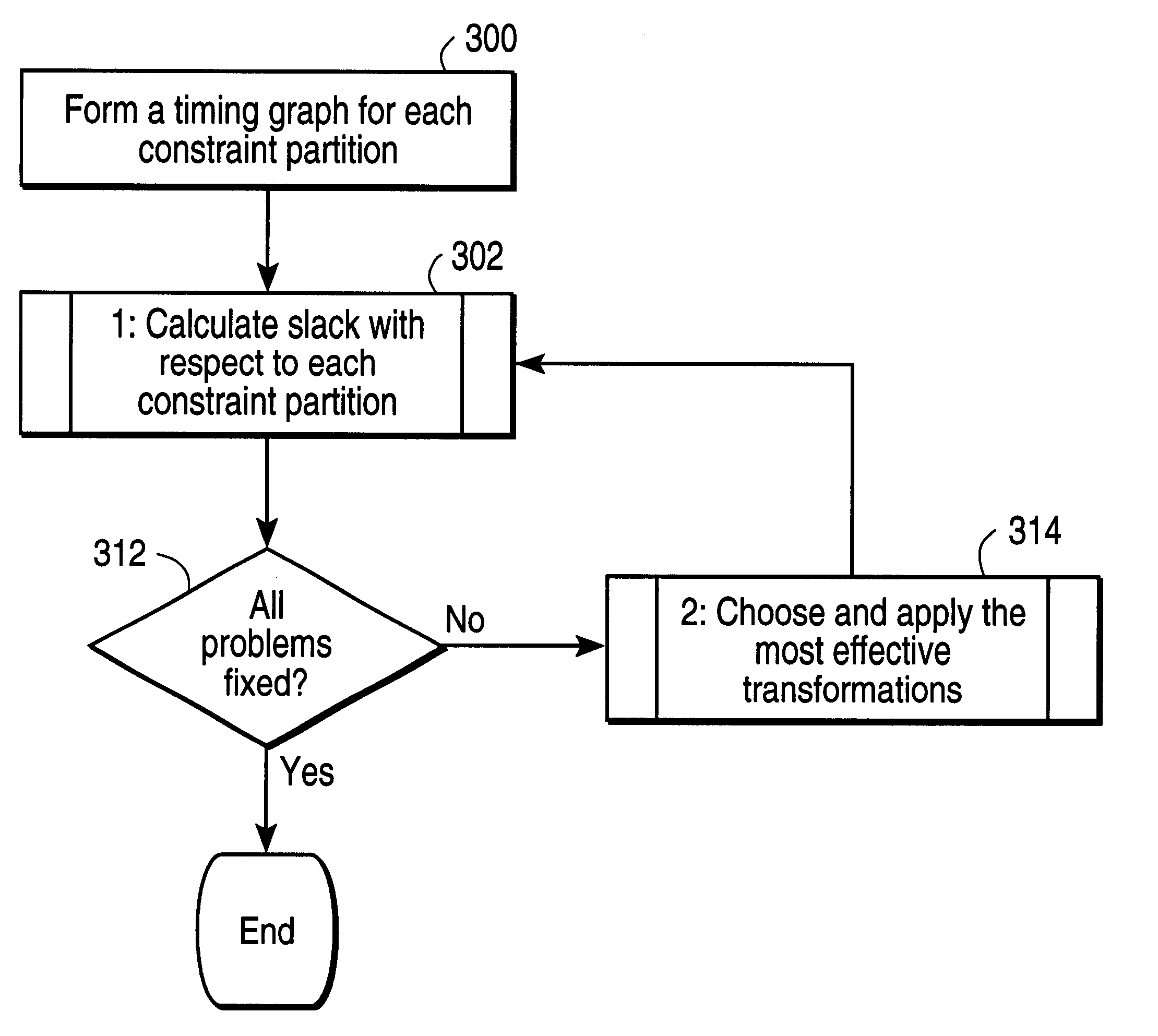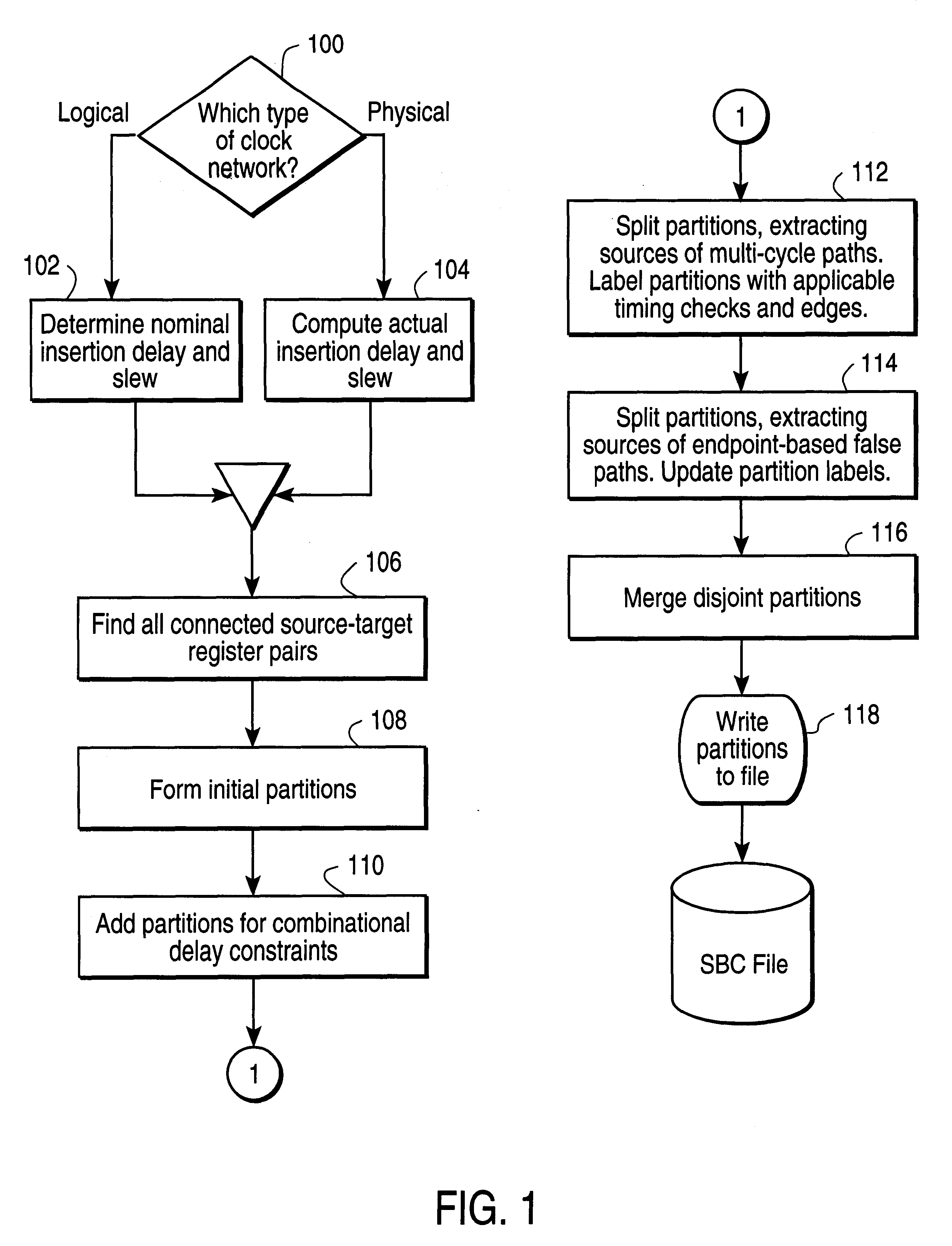System and method for generating and using stage-based constraints for timing-driven design
a technology of stage-based constraints and timing analysis, applied in the field of system and method for generating and using stage-based constraints for timing-driven design, can solve the problems of complex timing analysis techniques that cannot be used in very large designs, techniques will reach their limits in performance and capacity, and the interpretation accuracy of complex timing analysis techniques is difficult to achiev
- Summary
- Abstract
- Description
- Claims
- Application Information
AI Technical Summary
Benefits of technology
Problems solved by technology
Method used
Image
Examples
Embodiment Construction
Some of the differences and advantages of the present invention are now set forth. A compact and accurate form of the timing constraints is the system level constraints entered by the designer, which include arrival / departure times, clock waveforms, false and multi-cycle specifications, and boundary conditions. All of this information is required in order to provide complete coverage of the constraints on the design.
However, interpreting these constraints directly requires full-blown timing analysis, which is complicated by the fact that the delay constraint on each path depends on the relationship between the clock waveforms at the source and target, as well as the setup and hold times of the target.
Clock waveforms are usually specified at the root of a clock distribution network. The position of the edges in each waveform are set to reflect offsets from a common implicit reference point, which provides a consistent frame of reference for calculations which relate clock waveforms.
C...
PUM
 Login to View More
Login to View More Abstract
Description
Claims
Application Information
 Login to View More
Login to View More - R&D
- Intellectual Property
- Life Sciences
- Materials
- Tech Scout
- Unparalleled Data Quality
- Higher Quality Content
- 60% Fewer Hallucinations
Browse by: Latest US Patents, China's latest patents, Technical Efficacy Thesaurus, Application Domain, Technology Topic, Popular Technical Reports.
© 2025 PatSnap. All rights reserved.Legal|Privacy policy|Modern Slavery Act Transparency Statement|Sitemap|About US| Contact US: help@patsnap.com



